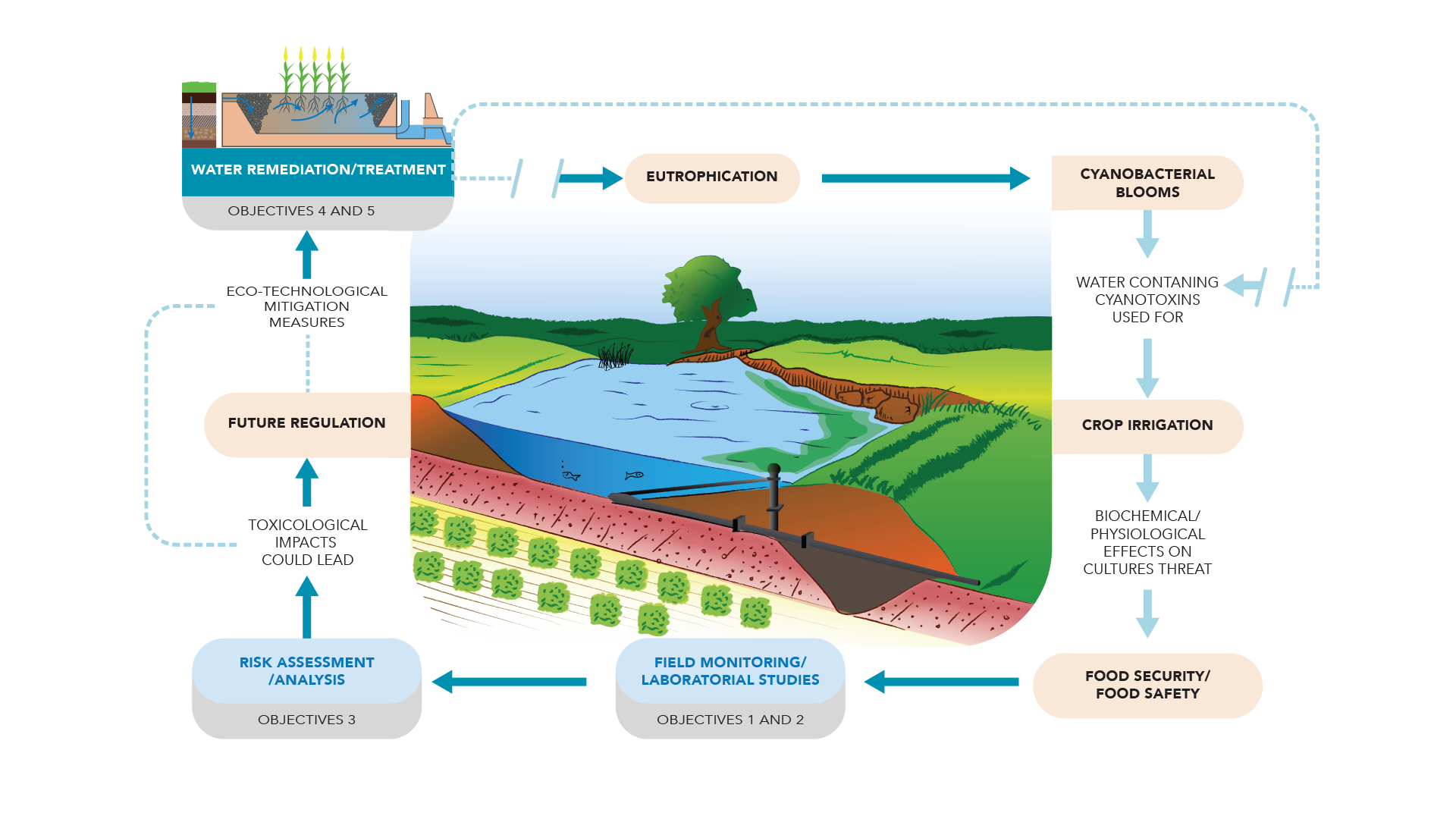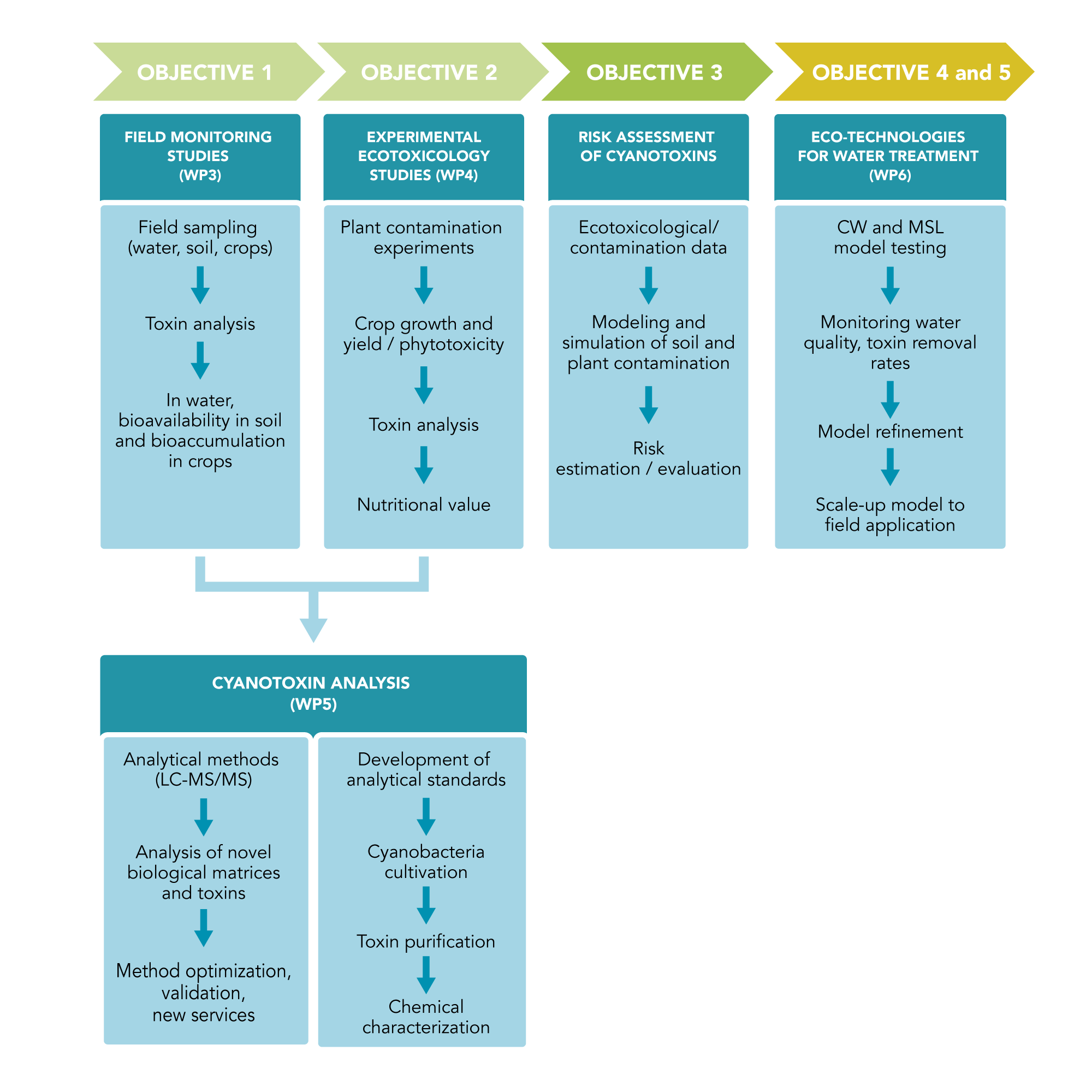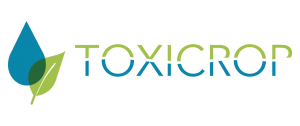Introduction and Research Context
Water scarcity and food production are some of the greatest challenges of our times. Freshwater resources in many countries are vulnerable due to their biogeographical and climatic characteristics. Moreover higher water consumption and higher human impacts in the downstream water bodies is leading to a higher eutrophication with increased incidence and intensity of cyanobacteria blooms and their toxins.
The scarcity of clean water resources leads to the compulsory use of water containing cyanobacteria and their toxins in agriculture. The consequent contamination of agricultural crops can potentiate Human exposure to cyanotoxins via consumption of contaminated plant food.
Surface and groundwaters are the principal water resources in agriculture, yet the knowledge about the use of irrigation water contaminated with toxic cyanobacteria and cyanotoxins in crop growth and yield is scattered which results in few protective measures.
Therefore TOXICROP will address the knowledge gaps pointed out and aims to disclose the toxicological outcomes concerning the use of cyanobacteria contaminated waters in agriculture, and also explore protective and mitigation procedures, in the domains of water management and water treatment.

Aims
TOXICROP aims to cover knowledge gaps and concerns raised related with the use of raw waters contaminated with cyanobacteria and cyanotoxins in crop irrigation and established the following specific objectives:
1) Field monitoring and assessment of cyanotoxins dispersion and transfer from eutrophic waters to soil and crops
2) Assess the phytotoxicity of cyanotoxins in variable environmental conditions
3) Risk assessment of eutrophic irrigation waters, addressing in particular the impacts on crop performance/yield and crop contamination
4) Assessment of the efficiency of CW ( Constructed Wetland ) and MSL ( Multi-soil Layering ) experimental models for cleaning biomasses of cyanobacteria and cyanotoxins in contaminated waters
5) Refining the design, performance and operation of CWs and MSL models, for specific treatment of raw waters contaminated with toxic cyanobacteria blooms
Workplan
TOXICROP workplan is constituted by six research workpakages that define the research activities to be implemented, by scientific area, which include Aquatic Ecology, Analytical Chemistry, Crop Physiology/Ecophysiology, Ecotoxicology, Applied Ecology, Ecological Engineering.

Expected Results / Impact
The implementation of TOXICROP has multiple impacts, scientific, technological, career development and societal. Among the impacts foreseen is the enhancement of the potential and future career perspectives of the staff members, through staff mobility and implementation of secondments, and elevate the scientific level and international recognition of Staff members.
Moreover TOXICROP will develop new and lasting research collaborations, increase transfer of knowledge and improve research and innovation potential within participant institutions, but also within Europe and worldwide, by delivering high quality results and producing knowledge in the fields of environmental risk assessment, environmental monitoring, crop protection, food safety and water treatment technologies.
The results and conclusions of this Project should lead to guidelines concerning the limits of cyanotoxins in irrigation waters, and guidelines for water management and farming.
TOXICRP will generate ideas and will initiate new lines of research and innovation devoted to biotechnological applications of cyanobacteria in agriculture, water treatment technologies and toxin analysis and monitoring.
